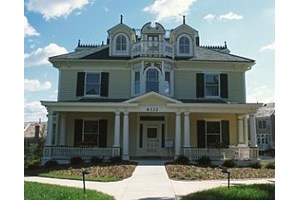
A History of Electricity in Virginia
By: Andy Farmer

Can you believe that fewer than 100 years ago 90% of rural Virginians didn’t have electricity? In fact, up until the early 20th century, electricity remained centered in cities where electric utilities were located and civilian populations were booming.
After the Civil War, Richmond and Norfolk flourished as industrial and shipping centers. This industrialization brought advances in technology and transportation, and soon railroads were carrying coal to the piers of Norfolk, creating one of the largest coal ports in the world. This influx of people and economic growth created a heightened need for electric services and spurred the electrification of Norfolk in 1881.
But Norfolk wasn’t the only city taking advantage of electricity. Richmond was the site of the first practical electrically powered trolley car system in the U.S. By early 1888, electric power pioneer Frank J. Sprague developed the Richmond Union Passenger Railway, which paved the way for the use of electricity in even more applications. The need for and use of electricity continued to spread throughout the city, and by 1900 Richmond was wired for electricity.
While urban centers like Norfolk and Richmond expanded their reliance on electricity, the vast majority of rural Virginia remained in the dark. While businesses began to move out of cities in pursuit of cheaper labor, it wasn’t until President Franklin Delano Roosevelt announced the Rural Electrification Act in 1936 that we saw electricity reaching many parts of rural Virginia. By the start of World War II, roughly 90% of Virginia’s farms had access to electricity.
The electrification of rural Virginia improved economic output, where farms could now have lights and machinery to aid in milking cows and other labor intensive tasks. Living standards also improved, as people could now use electricity to power their refrigerators and washing machines.
It’s difficult to imagine what our lives would have been like without the advent of electricity. As you consider the incredible impact electrification has had on your life, please consider the small and easy ways in which you can reduce your use of this important resource.
LOCAL NOTE: The Clark House on Columbia Pike, near the Harris Teeter Shopping Center, was built in 1902. Electricity was installed there in 1935.
Virginia Energy Sense is charged with helping residents of the Commonwealth decrease their electricity consumption 10% below 2006 levels by 2020.
Photographs & images, on this page, and on this website, are not available for use by other publications, blogs, individuals, websites, or social media sites. (Copyright © 2011 Annandale Chamber of Commerce. All rights reserved.) This article first appeared in October 2016 ENDEAVOR News Magazine, and may not be reproduced without the written permission of the author.
Copyright 2012 Annandale Chamber of Commerce. All rights reserved. Privacy Policy

